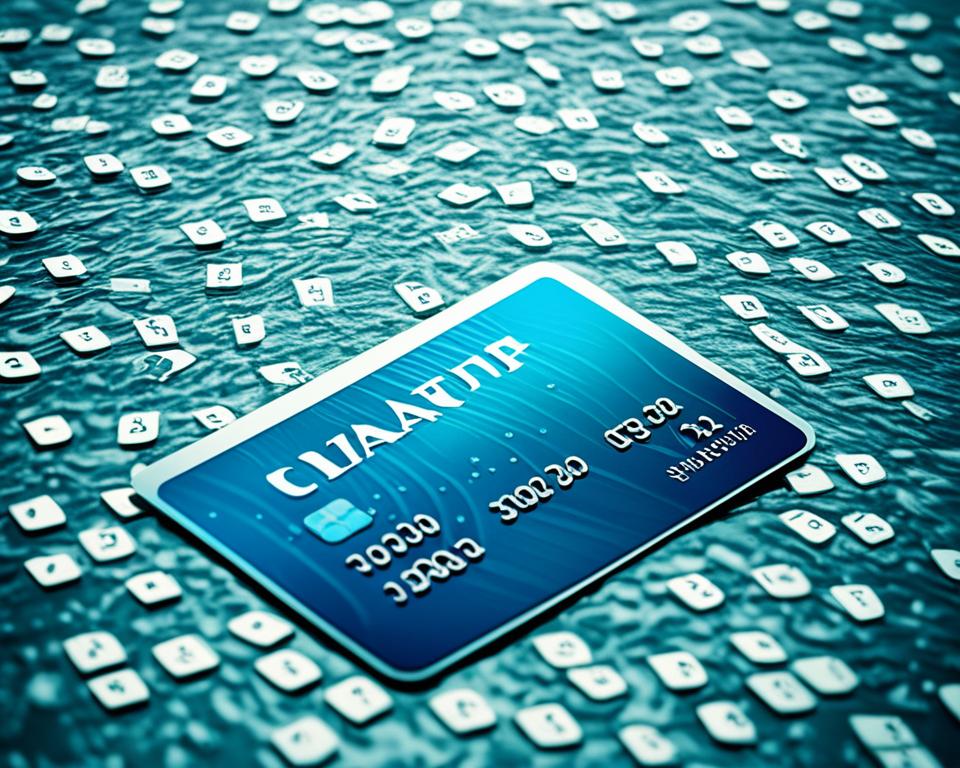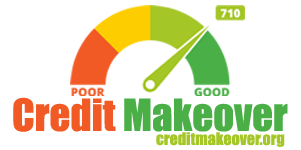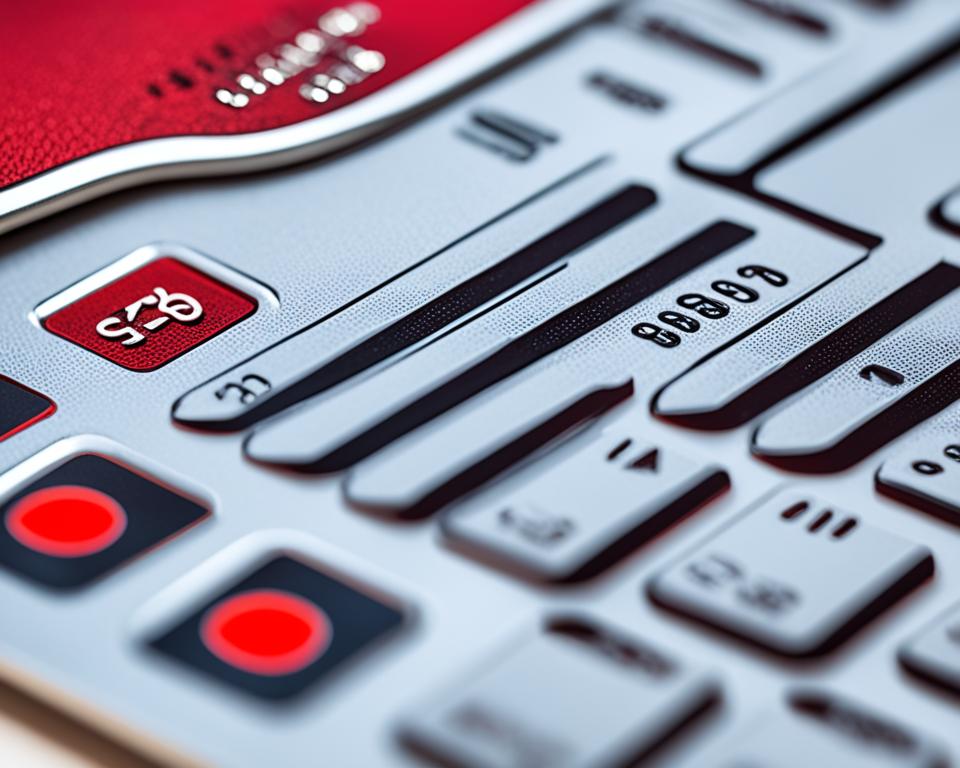Managing credit card debt is an important aspect of maintaining financial stability. Understanding your credit limit plays a crucial role in this process. It is essential to strike a balance between utilizing your credit and avoiding excessive debt. But how much credit card debt is too much? Let’s explore this topic to ensure you make informed decisions for your financial well-being.
Key Takeaways:
- Having a higher credit limit can work in your favor as it signals to lenders that you can maintain a healthy relationship with credit.
- Excessive credit card debt can negatively impact credit scores, particularly when credit utilization ratio exceeds 30%.
- There is no one-size-fits-all answer to the ideal amount of available credit, as it depends on individual goals and financial capabilities.
- A high credit limit offers benefits such as improved credit utilization ratio and more opportunities to earn rewards, but it can also tempt individuals to increase debt.
- Requesting a credit limit increase should be done judiciously, considering factors like increased income or credit score improvement.
The Impact of Credit Card Debt on Credit Scores
Excessive credit card debt can have a significant impact on credit scores. While it is generally not harmful to accumulate credit over time, applying for too much credit at once can negatively affect the credit utilization ratio, which in turn affects credit scores.
Credit utilization ratio is the percentage of your available credit that you are currently using. It is calculated by dividing the total amount of credit card debt you have by the sum of your credit limits on all your cards. A higher credit utilization ratio indicates a higher level of debt and may be viewed negatively by lenders.
To maintain healthy credit scores, it is recommended to keep your credit card debt below a certain threshold. Financial experts advise not exceeding 30% of your available credit limit. This means if you have a credit card with a $10,000 limit, it is best to keep your balance below $3,000 to avoid negatively impacting your credit scores.
However, it is important to note that the specific amount of available credit does not directly factor into credit scores. Credit scoring models take into account various factors such as payment history, length of credit history, types of credit, and new credit applications. The credit limit is at the discretion of individual lenders and does not inherently impact credit scores.
To illustrate the impact of credit utilization ratio on credit scores, consider the following example:
| Credit Card | Credit Limit | Balance | Credit Utilization Ratio |
|---|---|---|---|
| Card A | $5,000 | $1,500 | 30% |
| Card B | $10,000 | $4,000 | 40% |
| Card C | $15,000 | $3,000 | 20% |
In this example, Card B has the highest credit utilization ratio at 40%, which may result in a slightly negative impact on the cardholder’s credit scores. Card C, on the other hand, has the lowest credit utilization ratio at 20%, which may have a positive effect on the cardholder’s credit scores.
It is important to regularly monitor your credit card utilization and make timely payments to manage your credit card debt responsibly. By keeping your credit card balances below the recommended threshold, you can maintain healthy credit scores and improve your overall financial well-being.
Determining an Ideal Amount of Available Credit
When it comes to managing credit card debt, there is no one-size-fits-all answer to how much available credit one should have. It ultimately depends on individual goals, financial capabilities, and personal circumstances. However, there are certain factors to consider when determining an ideal amount of available credit to maintain a healthy credit card debt level.
Having enough available credit can provide a sense of security, especially in emergencies or unexpected situations. It acts as a financial safety net that can be tapped into if needed. However, relying too heavily on credit cards or maxing them out can lead to financial stress and a cycle of debt. It’s important to strike a balance between having enough available credit and avoiding excessive reliance on credit.
Here are some key guidelines for managing credit card debt and maintaining a healthy level of available credit:
- Stay on track with payments: Making timely payments is crucial to avoid late fees and negative impacts on credit scores. Paying the minimum amount due is the bare minimum; it’s recommended to pay off the balance in full whenever possible.
- Keep accounts open and active: Closing credit card accounts can negatively affect credit scores, as it can reduce the total available credit. Keeping accounts open, even if they are not frequently used, can help maintain a healthy credit utilization ratio.
- Avoid using more than 30% of available credit: Using a large percentage of available credit can indicate financial instability to lenders and negatively impact credit scores. It’s advisable to keep credit card balances below 30% of the available credit limit.
- Avoid applying for too much credit at once: Applying for multiple lines of credit within a short period of time can signal financial distress to lenders. It’s best to be strategic and thoughtful when considering new credit applications.
By following these guidelines, individuals can manage their credit card debt effectively and maintain a healthy credit card debt level. It’s important to remember that responsible credit card usage involves using credit as a tool rather than relying on it excessively.
The Relationship Between Credit Utilization Ratio and Credit Scores
One important aspect to consider when determining an ideal amount of available credit is the relationship between credit utilization ratio and credit scores. Credit utilization ratio is the percentage of available credit that is being utilized at any given time.
A lower credit utilization ratio is generally seen as positive and can contribute to higher credit scores. It shows that a person is using credit responsibly and not relying heavily on credit cards or accumulating excessive debt. As mentioned earlier, it’s recommended to keep credit card balances below 30% of the available credit limit to maintain a healthy credit utilization ratio.
Here’s an example to illustrate the relationship between credit utilization ratio and credit scores:
| Available Credit Limit | Credit Card Balance | Credit Utilization Ratio | Credit Score Impact |
|---|---|---|---|
| $10,000 | $3,000 | 30% | Positive |
| $10,000 | $6,000 | 60% | Negative |
As shown in the example, a credit utilization ratio of 30% has a positive impact on credit scores, while a ratio of 60% has a negative impact. This highlights the importance of managing available credit and keeping credit card balances in check.
By considering individual goals, following responsible credit card usage guidelines, and maintaining a healthy credit utilization ratio, it becomes easier to determine an ideal amount of available credit that aligns with one’s financial well-being and objectives.

Advantages and Disadvantages of a High Credit Limit
A high credit limit can offer several advantages, but it can also come with potential drawbacks. Let’s explore the benefits and downsides of having a high credit limit to help you make informed decisions about your credit card debt.
Advantages of a High Credit Limit
1. Improved Credit Utilization Ratio: A high credit limit allows you to maintain a lower credit utilization ratio, which is the percentage of your available credit that you are using. This ratio plays a significant role in determining your credit score. By keeping your credit card balances low compared to your credit limit, you can demonstrate responsible credit usage and potentially improve your credit score.
2. More Opportunities for Rewards: With a higher credit limit, you have more flexibility to make larger purchases without exceeding your credit utilization ratio. This can provide more opportunities to earn rewards, such as cash back or travel points, which can be beneficial if you use your credit cards strategically and pay off your balances in full each month.
3. Financial Emergency Resources: A high credit limit can serve as an additional financial resource in case of emergencies. It can give you a cushion to cover unexpected expenses or temporary cash flow shortages. Having this safety net can provide peace of mind and help you navigate unexpected financial challenges.
Disadvantages of a High Credit Limit
1. Temptation to Spend and Increase Debt: It’s important to exercise discipline and avoid the temptation to spend beyond your means when you have a high credit limit. Having easy access to a larger credit line can lead to overspending and the accumulation of unnecessary debt if not managed responsibly.
2. Potential Negative Impact on Credit Scores: Applying for new credit to increase your overall credit utilization ratio can have negative financial consequences. It may lead to a decrease in your credit scores and potentially result in higher interest rates on future credit applications. It’s crucial to carefully evaluate the impact of requesting additional credit and consider the potential trade-offs before pursuing a higher credit limit.
“A high credit limit can provide financial flexibility and rewards, but it’s important to avoid excessive spending that can lead to increased debt.” – Financial Expert
It’s essential to weigh the advantages and disadvantages of having a high credit limit. Consider your financial goals, spending habits, and ability to manage credit responsibly. Remember that responsible credit card usage involves staying within your means, paying your balances on time, and keeping your credit utilization ratio at a manageable level.
To gain further insights, let’s take a look at the following table that summarizes the advantages and disadvantages of a high credit limit:
| Advantages of a High Credit Limit | Disadvantages of a High Credit Limit |
|---|---|
| Improved credit utilization ratio | Temptation to spend and increase debt |
| More opportunities for rewards | Potential negative impact on credit scores |
| Additional financial resources in emergencies |
Understanding the advantages and disadvantages of a high credit limit can help you make informed decisions when managing your credit card debt. By using credit responsibly and maintaining a balanced approach, you can ensure that a high credit limit works to your advantage and supports your financial goals.
How to Increase Your Credit Limit
Looking to increase your credit limit? It’s a common goal for individuals looking for more financial flexibility. Fortunately, there are steps you can take to request a credit limit increase from your current card provider. Keep in mind that timing and financial responsibility are key factors in achieving a successful increase.
First, it’s important to choose the right moment to make your request. Consider asking for a credit limit increase when you have experienced an increase in income or have made significant improvements in your credit score. These positive changes can demonstrate to your card issuer that you are more financially stable and capable of handling a higher credit limit.
When it comes time to make the request, contact your card provider directly. This can typically be done through their customer service hotline or online portal. Provide your updated financial information, emphasizing any changes that would support your request for a credit limit increase.
However, it’s important to understand that there are no guarantees that your card issuer will grant your request or increase your limit by the desired amount. They will assess your financial situation and make a decision based on their policies and your creditworthiness.
It’s crucial to approach the credit limit increase responsibly. Avoid taking on additional debt while pursuing a higher credit limit. Taking on more debt can lead to financial strain and potentially put you at risk of accumulating excessive credit card debt.
Remember, increasing your credit limit should not be seen as an opportunity to spend beyond your means. It’s essential to continue practicing responsible credit card usage, keeping your spending within a reasonable limit and making timely payments.
By following these guidelines, you increase the likelihood of successfully increasing your credit limit. However, it’s important to evaluate your financial situation and determine if a credit limit increase is the right step for you. It’s always advisable to have a thorough understanding of your financial capabilities and to use credit responsibly.
With a higher credit limit, you can enjoy increased financial flexibility and potentially improve your credit utilization ratio. Just remember to request the increase at the right time, maintain responsible financial habits, and avoid taking on excessive credit card debt.
Increasing your credit limit can be a valuable tool in managing your personal finances. Speak with your card issuer today and explore the possibilities that a higher credit limit can offer.
Sources:
- “How to Increase Your Credit Limit” – The Balance
- “Increase Your Credit Limit: How to Do It and Best Practices” – Experian

The Impact of Closing a Credit Card on Credit Scores
When it comes to managing credit card debt, one important decision that individuals may face is whether to close a credit card. While closing a credit card may seem like a simple solution, it can have a significant impact on credit scores.
One of the factors that contribute to credit scores is the credit utilization ratio. This ratio measures the amount of credit being used in relation to the total available credit limit. When a credit card is closed, the available credit limit decreases, which can cause the credit utilization ratio to increase. Higher credit utilization ratios are generally associated with higher credit risk and can lower credit scores.
It’s important to carefully consider the consequences before deciding to close a credit card. While closing a credit card may be necessary in some situations, such as to avoid annual fees or prevent overspending, it’s crucial to evaluate the potential impact on credit scores.
Additionally, it’s advisable to keep the credit card balance as low as possible in relation to the credit limit. This can help maintain a healthy credit utilization ratio and potentially mitigate the negative effects of closing a credit card. By paying the balance in full each month, individuals can demonstrate responsible credit management and improve their credit standing. If paying the balance in full is not possible, it’s recommended to pay as much over the minimum as possible to reduce the credit card balance.
“Closing a credit card can impact your credit score, especially if it results in a higher credit utilization ratio. It’s important to carefully assess the potential consequences and consider alternative strategies for managing credit card debt.”
Understanding the impact of closing a credit card on credit scores can help individuals make informed decisions about managing their credit card debt. By considering the potential consequences, keeping credit card balances low, and paying bills on time, individuals can maintain healthy credit scores and financial stability.
| Impact of Closing a Credit Card | Outcome |
|---|---|
| Decreased available credit limit | Increased credit utilization ratio |
| Higher credit utilization ratio | Potential negative impact on credit scores |
| Possible increase in credit risk | Lowered creditworthiness |
Finding the Right Number of Credit Cards
When it comes to managing credit card debt, finding the right number of credit cards is crucial. While the ideal number varies for each individual, generally it is best to have two to three credit cards to strike a balance between avoiding overspending and maximizing rewards.
Having multiple credit cards offers additional financial resources in emergencies and provides payment options for different purchases. For example, one card may offer better rewards for travel expenses, while another may have a low-interest rate for balance transfers. By strategically using different credit cards, individuals can optimize their benefits and manage their expenses effectively.
However, it is important to use credit cards wisely and avoid exceeding the credit limits. Falling into a cycle of accumulating excessive credit card debt can lead to financial burden and stress. By keeping the number of credit cards limited and being mindful of spending habits, individuals can better control their credit card debt and maintain a healthy financial standing.
Remember that responsible credit card usage involves staying on top of payments, regularly reviewing credit card statements, and not relying heavily on credit cards for everyday expenses. By using credit cards responsibly and avoiding overspending, individuals can effectively manage their credit card debt and achieve financial stability.
In summary, finding the right number of credit cards involves assessing personal financial needs, considering potential benefits and drawbacks, and prioritizing responsible credit card usage. By striking a balance between convenience and financial responsibility, individuals can effectively manage their credit card debt and achieve long-term financial well-being.
The Benefits of a Higher Credit Limit
A higher credit limit can bring several advantages and contribute to better credit card debt management. Let’s explore the benefits:
Improving Credit Utilization Ratio
One of the key benefits of having a higher credit limit is that it can improve your credit utilization ratio. This ratio refers to the percentage of your available credit that you are currently using. By increasing your credit limit, you effectively decrease your credit utilization ratio, which is a positive factor in calculating your credit scores. Maintaining a low utilization ratio demonstrates responsible borrowing behavior to lenders and can help boost your creditworthiness.
Providing a Sense of Security
Having a higher credit limit can provide a sense of security, especially in case of emergencies or unexpected expenses. It allows you to have more financial flexibility and easily handle larger expenses without maxing out your credit cards. This can help you avoid resorting to other forms of expensive borrowing, such as payday loans or high-interest personal loans.
Earning More Rewards
Another advantage of a higher credit limit is the potential to earn more rewards. Many credit card issuers offer rewards programs that provide cashback, travel miles, or points for every purchase made. With a higher credit limit, you have more spending capacity, which allows you to make more purchases and accumulate more rewards. Just remember to use your credit responsibly and pay off the balance in full each month to maximize the benefits of these rewards programs.
Having a higher credit limit can improve credit utilization ratio, provide a sense of security, and offer the opportunity to earn more rewards.
However, it’s important to note that while a higher credit limit can bring benefits, it must be used wisely. It’s crucial to avoid using the higher credit limit as an excuse to increase your debt load. Always strive to maintain a low credit utilization ratio by keeping your credit card balances as low as possible in relation to your credit limit. Responsible credit card usage is key to avoiding excessive credit card debt and maintaining a healthy financial situation.
The Downsides of a High Credit Limit
While having a high credit limit can offer potential benefits, such as improving credit utilization ratio and providing more financial resources, there are downsides to consider. It’s important to be aware of the potential risks and drawbacks associated with a high credit limit.
The Potential to Accumulate More Debt
One of the downsides of having a high credit limit is the temptation to accumulate more debt. With a higher credit limit, there is a greater capacity to spend beyond one’s means and carry excessive credit card debt. This can lead to financial instability and difficulty in managing debt payments.
Overcharge Fees and Credit Limit Decreases
If you approach or exceed your credit limit, you may face overcharge fees or penalties. These fees can quickly add up and contribute to higher overall debt. Additionally, credit card issuers may choose to decrease your credit limit if they perceive your credit utilization as too high. A decreased credit limit can limit your financial flexibility and impact your ability to access credit when needed.
Negative Impact on Credit Scores and Interest Rates
Applying for new credit to increase your credit limit can have negative consequences. When you apply for new credit, lenders may view this as a sign of increased reliance on credit, which can lower your credit scores. Lower credit scores can result in higher interest rates on loans and credit cards, making it more costly to borrow money in the future.
It is important to be mindful of the risks associated with a high credit limit and use credit responsibly. By being aware of your credit card debt limit, avoiding excessive credit card debt, and managing your credit card usage wisely, you can maintain a healthy financial standing and avoid the downsides associated with a high credit limit.
| Downsides of a High Credit Limit | Impact |
|---|---|
| Potential to accumulate more debt | Increased financial instability and difficulty managing debt payments |
| Overcharge fees and credit limit decreases | Financial penalties and reduced access to credit |
| Negative impact on credit scores and interest rates | Lower credit scores and higher interest rates on loans and credit cards |

Factors That Influence Credit Limit Changes
When it comes to credit limits, they are not set in stone. Credit card issuers periodically review customer usage to determine if credit limit adjustments are necessary. These adjustments are influenced by a variety of factors that can either increase or decrease the credit limit.
Positive factors that can lead to an increase in credit limit include:
- Responsible credit usage
- Consistent on-time payments
- Overall improvement in credit score
- Reported increase in income
- Customer requests
On the other hand, there are several factors that can result in a decrease in credit limit:
- Taking on more debt
- Missed payments
- Rarely using the card
- Errors in the credit report
- Instances of identity theft
It’s important to note that the factors influencing credit limit changes vary among credit card issuers. Therefore, it’s crucial to familiarize oneself with the specific policies of the card issuer.
Understanding the factors that influence credit limit changes can help individuals make informed decisions about their credit usage and financial stability. By demonstrating responsible credit behavior, individuals can increase their chances of having their credit limits adjusted upward, providing them with more financial flexibility and opportunities.
| Positive Factors | Negative Factors |
|---|---|
| Responsible credit usage | Taking on more debt |
| Consistent on-time payments | Missed payments |
| Overall improvement in credit score | Rarely using the card |
| Reported increase in income | Errors in the credit report |
| Customer requests | Instances of identity theft |
Credit card issuers review customer usage to determine credit limit adjustments. Positive factors such as responsible credit usage, consistent on-time payments, an overall improvement in credit score, reported increase in income, and customer requests can lead to an increase in credit limit. Conversely, taking on more debt, missed payments, rarely using the card, errors in the credit report, and instances of identity theft can result in a decrease in credit limit. It’s crucial to understand these factors and act responsibly to maintain a healthy credit limit and financial stability.
The Importance of Knowing Your Credit Limit
Understanding and managing your credit card debt limit is essential for maintaining financial stability. By knowing your credit limit, you can avoid going over it, which can lead to negative consequences and financial hardship.
When you exceed your credit limit, credit card issuers may impose overcharge fees, decrease your credit limit, or even close your account. These repercussions can be detrimental to your financial well-being.
Moreover, charging too much on your credit card can have a negative impact on your credit scores and interest rates. Lenders consider high credit utilization as a sign of financial instability, which can result in higher interest rates on future loans and credit applications.
Therefore, it is crucial to regularly keep track of how much you have charged on your credit card and stay within your credit limit. By doing so, you can avoid unnecessary fees, maintain a healthy credit utilization ratio, and protect your credit scores.
Here’s a table highlighting the importance of knowing your credit limit:
| Benefits of Knowing Your Credit Limit | Consequences of Exceeding Your Credit Limit |
|---|---|
|
|

Knowing your credit limit empowers you to make informed decisions when using your credit card and helps you maintain a healthy financial position. Regularly monitoring your spending and staying within your credit limit can prevent unnecessary financial stress and ensure a responsible approach to managing credit card debt.
The Relationship Between Credit Limit and Credit Utilization Ratio
The credit limit of a credit card plays a significant role in determining the credit utilization ratio, which is an important factor in credit scores. The credit utilization ratio is the percentage of the credit limit that a borrower has used. A lower credit utilization ratio indicates that the borrower is utilizing their credit responsibly and can have a positive impact on credit scores.
It is recommended to keep the credit card balance as low as possible in relation to the credit limit to maintain a healthy credit utilization ratio. By keeping the credit utilization ratio low, borrowers can demonstrate their ability to manage credit effectively and increase their chances of obtaining favorable terms in future credit applications.
Key Points:
- A credit limit determines the maximum amount of credit available to a borrower.
- Credit utilization ratio is the percentage of the credit limit that a borrower has used.
- A lower credit utilization ratio is associated with better credit scores.
- Keeping the credit card balance low in relation to the credit limit is recommended to maintain a healthy credit utilization ratio.
The credit utilization ratio is an essential factor in credit scoring models because it reflects a borrower’s ability to manage credit responsibly. Lenders typically view borrowers with lower credit utilization ratios as less risky, making them more likely to approve credit applications and offer favorable terms.
Example of Credit Utilization Ratio:
| Credit Card | Credit Limit | Outstanding Balance | Credit Utilization Ratio |
|---|---|---|---|
| Credit Card A | $5,000 | $1,000 | 20% |
| Credit Card B | $10,000 | $8,000 | 80% |
| Credit Card C | $2,000 | $500 | 25% |
In the above example, Credit Card A has a credit utilization ratio of 20% because the outstanding balance of $1,000 is 20% of the credit limit of $5,000. Credit Card B has a credit utilization ratio of 80% because the outstanding balance of $8,000 is 80% of the credit limit of $10,000. Credit Card C has a credit utilization ratio of 25% because the outstanding balance of $500 is 25% of the credit limit of $2,000.
Maintaining a low credit utilization ratio by keeping credit card balances low is an effective strategy to improve credit scores. It is recommended to regularly monitor credit utilization ratio and make timely payments to ensure a healthy credit profile.
Tips for Responsible Credit Card Usage
When it comes to managing credit card debt, responsible usage is key. By following these tips, you can maintain a healthy relationship with credit cards and avoid falling into debt traps.
Stay on Track with Payments
One of the most important aspects of responsible credit card usage is making payments on time. Late payments can lead to high interest charges, late fees, and a negative impact on your credit score. Set reminders or use automatic payments to ensure that you never miss a payment.
Keep Accounts Open and Active
Keeping your credit card accounts open can have a positive impact on your credit score. Closing accounts may reduce your overall available credit and shorten your credit history, which can lower your credit score. However, it’s important to use your credit cards regularly to keep them active. Make small, regular purchases and pay them off in full each month to demonstrate responsible usage.
Avoid Using More than 30% of the Available Credit
Using a significant amount of your available credit can signal financial stress to lenders and negatively impact your credit score. Aim to use no more than 30% of your available credit to maintain a healthy credit utilization ratio. Keeping your balances low shows that you can responsibly manage your credit.
Refrain from Applying for Too Much Credit at Once
Applying for multiple credit cards or loans within a short period of time can raise red flags for lenders. It may indicate a financial need or desperation, potentially impacting your ability to handle debt. Only apply for credit when you truly need it and remember to space out your applications.
Review Credit Card Statements Regularly
It’s important to review your credit card statements regularly to spot any unauthorized charges or errors. By catching these issues early, you can dispute them with your credit card provider and protect yourself from fraudulent activity. Regularly monitoring your statements also helps you keep track of your spending and stay within your budget.
Remember, managing credit card debt requires discipline and responsible financial habits. By staying on top of your payments, avoiding excessive credit utilization, and using your credit cards wisely, you can maintain a healthy credit profile and avoid falling into unnecessary debt traps.
Conclusion
Understanding the credit limit and managing credit card debt responsibly is crucial for maintaining financial stability and healthy credit scores. While there is no specific answer to how much credit card debt is too much, it is important to find a balance that aligns with individual goals and financial capabilities.
By using credit cards wisely and avoiding excessive debt, individuals can maintain a healthy relationship with credit. This includes staying on track with payments, keeping accounts open and active, and avoiding maxing out credit cards. It is also recommended to keep credit utilization below 30% of the available credit limit.
Maintaining a healthy credit card debt level opens the door to lower interest rates and improved financial opportunities. It also helps to avoid negative consequences such as overcharge fees, credit limit decreases, and account closures. By practicing responsible credit card usage, individuals can benefit from the advantages of credit cards while maintaining a positive financial outlook.
FAQ
What is the credit card debt limit?
The credit card debt limit refers to the maximum amount of debt you can carry on your credit cards. It is determined by the credit card issuer and is based on factors such as your credit history, income, and creditworthiness.
How much credit card debt is too much?
There is no one-size-fits-all answer to this question, as it depends on individual financial circumstances. However, a general guideline is to avoid accumulating credit card debt that exceeds 30% of your available credit limit.
What are the signs of having too much credit card debt?
Signs of excessive credit card debt include struggling to make minimum monthly payments, relying on credit cards for everyday expenses, constantly maxing out credit cards, and experiencing financial stress or difficulty in paying bills.
How can I determine a healthy level of credit card debt?
A healthy level of credit card debt is one that you can comfortably manage and pay off within a reasonable timeframe. It is important to balance credit card usage with your income, expenses, and financial goals to ensure financial stability.
What are the advantages of having a high credit limit?
A high credit limit can improve your credit utilization ratio and demonstrate responsible borrowing behavior to lenders. It can also provide a sense of security and the opportunity to earn more rewards on your credit card spending.
What are the disadvantages of having a high credit limit?
One disadvantage of a high credit limit is the potential to accumulate more debt if you are not careful with your spending. Additionally, applying for new credit to increase your credit limits may negatively impact your credit scores and increase your interest rates.
How can I increase my credit limit?
You can request a credit limit increase from your credit card provider. However, the approval of the increase will depend on factors such as your income, credit history, and responsible credit card usage. It is important to time your request appropriately and avoid taking on more debt when seeking a credit limit increase.
What happens if I close a credit card?
Closing a credit card can negatively impact your credit scores as it can affect your credit history and credit utilization ratio. It is important to consider the potential consequences before closing a credit card and strive to keep the credit card balance as low as possible compared to the credit limit.
How many credit cards should I have?
The right number of credit cards varies for each individual. Generally, it is recommended to have two to three credit cards to avoid overspending and maximize rewards. Having multiple credit cards can provide additional financial resources in emergencies and provide payment options.
What are the benefits of a higher credit limit?
A higher credit limit can improve your credit utilization ratio and signal to lenders that you can manage credit responsibly. It can also provide a sense of security and give you more financial flexibility in case of emergencies.
What factors can influence credit limit changes?
Credit card issuers periodically review customer usage and may adjust credit limits based on factors such as responsible credit usage, on-time payments, credit score improvement, reported increase in income, and customer requests. However, credit limits can also decrease if customers have taken on more debt, missed payments, rarely used the card, or if there are errors in the credit report or instances of identity theft.
Why is it important to know my credit limit?
Knowing your credit limit is crucial to avoid exceeding it, which can lead to negative consequences such as overcharge fees, credit limit decreases, and account closures. Charging too much on a credit card can also negatively affect your credit scores and interest rates.
What is the relationship between credit limit and credit utilization ratio?
Credit limit and credit utilization ratio are closely related. Credit utilization ratio is the percentage of your available credit that you have used. Keeping your credit card balance as low as possible in relation to your credit limit is recommended to maintain a healthy credit utilization ratio, which is a significant factor in credit scores.
What are some tips for responsible credit card usage?
To maintain a healthy relationship with credit cards, it is important to stay on track with payments, keep accounts open and active, avoid using more than 30% of your available credit, and refrain from applying for too much credit at once. Regularly reviewing your credit card statements and checking for fraudulent purchases or errors is also recommended.





